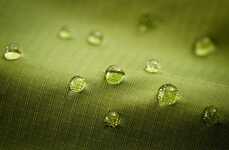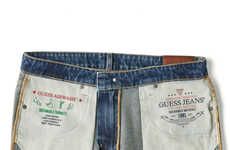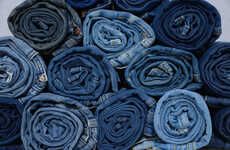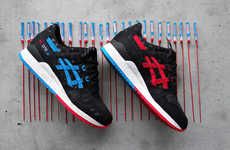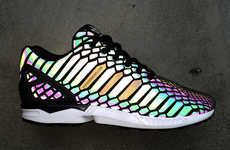
ColorDry Rids Chemicals and the Use of Water to Dye Fabrics
In addition to the ever-growing technologies that have inspired many creatives to incorporate at least some elements of high-tech to the production of their garments, Nike has recently revealed a dyeing innovation that is completely water-free called ColorDry. The environmentally friendly method of using no water or harmful chemicals that are used in traditional fabric dyeing was created by Taiwanese manufacturer Far Eastern New Century Corp (FENC). This sustainable innovation demonstrates the extremely environmentally friendly technology is coupled with uncompromising fabric coloring.
Today, approximately 100 to 150 liters of water is used to process only one kilogram of textiles. This novel innovation hits two birds with one stone in this extremely sustainable method of creating dyed fabrics that rids the use of harmful chemicals, bi-products and water to help reduce global energy consumption.
Today, approximately 100 to 150 liters of water is used to process only one kilogram of textiles. This novel innovation hits two birds with one stone in this extremely sustainable method of creating dyed fabrics that rids the use of harmful chemicals, bi-products and water to help reduce global energy consumption.
Trend Themes
1. Water-free Dyeing - The trend towards water-free dyeing methods for textiles is growing quickly in response to environmental concerns.
2. Sustainable Textiles - The push for environmentally-friendly production methods is driving the development of sustainable textiles.
3. High-tech Fabric Manufacturing - The use of technology in fabric production continues to grow and innovate in a wide range of applications.
Industry Implications
1. Textile Manufacturing - Water-free dyeing technology will disrupt traditional textile manufacturing methods by allowing for sustainable and environmentally friendly production.
2. Sportswear - The sportswear industry, a major player in textile manufacturing, can benefit from the use of waterless dyeing methods to reduce their environmental impact.
3. Fashion - Sustainable fabric production is driving innovation in the fashion industry, leading to new opportunities for companies to embrace eco-friendly design and manufacturing.
6.2
Score
Popularity
Activity
Freshness





